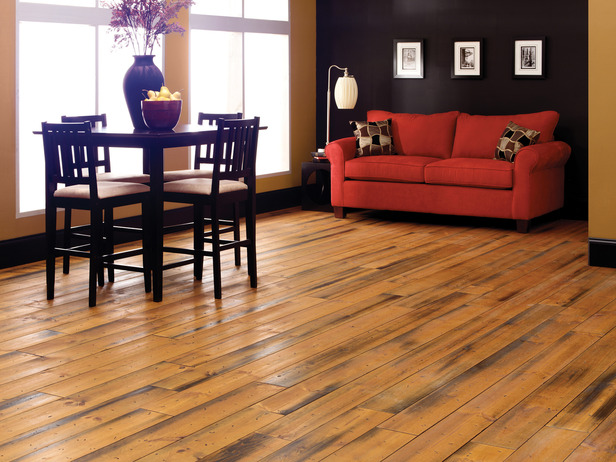|
|
本帖最后由 greenback 于 2011-9-20 00:58 编辑
Today’s choices in flooring are more varied than ever, running the gamut of styles, finishes and installation options. Product innovation is clearly blurring the lines between many flooring categories, and the raw materials used to create flooring types include gin bottles, corn sugar and the staves from old wine barrels. The winner in this underfoot mash-up is the consumer, who benefits from an astonishing array of choices that fit any lifestyle and budget.

Wood
Hardwood flooring is renowned for its natural beauty and durability. Its classic good looks harmonize with any architectural theme or interior design, and it’s an especially good choice to create visual room-to-room continuity for homes with open floor plans.
Hardwood flooring comes as strips 1-1/2 to 2-1/2 inches wide or planks 4 to 8 inches wide. Domestic species include oak, maple and black walnut. Regional varieties, such as pecan, chinquapin and mesquite, are not widely distributed but offer distinctive grain patterns.
The availability of exotic species of hardwoods varies with market conditions, and popular imported varieties include Brazilian cherry, purpleheart, and African pedauk. To make sure the wood flooring you buy is harvested from sustainable, managed forests, look for certification from the FSC (Forest Stewardship Council) and the SFI (Sustainable Forest Initiative).
Coatings for prefinished hardwood have benefited from technological advancements, and finishes may include additives such as ceramics, aluminum oxide, and acrylic monomers that produce incredibly tough surfaces.
Solid wood must be nailed to a subfloor. An advantage of solid wood is that it can be refinished many times over its lifespan.
Hardwood costs $3 to $8 per square foot, and exotic varieties may be as high as $14 per square foot. Expect to pay $5 to $12 per square foot for professional installation. |
|